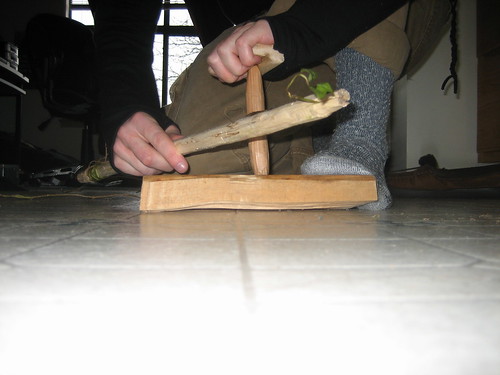Kamana One
Kamana is the Wilderness Awareness School‘s four-level independent study “naturalist training program”.
Kamana One introduces the student to the ideas and style of teachings that will form the base for the rest of the program. It’s divided into two sections. The first, the “Nature Awareness Trail” devotes itself to the psychological aspects of the modern primitive. It deals with awareness; directions, surroundings, details. I was surprised at the remarkable similarities between it and vipassana.
The second part, the “Resource Trail” deals with the other half of naturalist training. Mammal and plant identification, bird language, and field guides are just a few of the topics covered. This part is often referred to as “the field guide for field guides” because of it’s ability to decrypt the otherwise esoteric manuals.
In addition to the text book, Kamana One includes Jon Young’s Seeing Through Native Eyes audio set. This is definitely the best part of the course. It’s best described as all of Jon Young’s vast knowledge squeezed down and compressed into 8 CDs, covering both psychological and physical aspects.
In the end, I don’t feel that the program (with the exception of the audio portion) gave me much new. The ideas presented in the “Nature Awareness Trail” I had already developed through my own readings and practice. The ideas in “Resource Trail”, too, I had already discovered through my own study, including the Learning Herbs kit. The course is better suited for one who is new to all of this. Someone who perhaps has an interest in the outdoors, in survival, but is looking to take that interest a step forward.
(Urban Scout has some criticisms and other thoughts of the Kamana program.)
